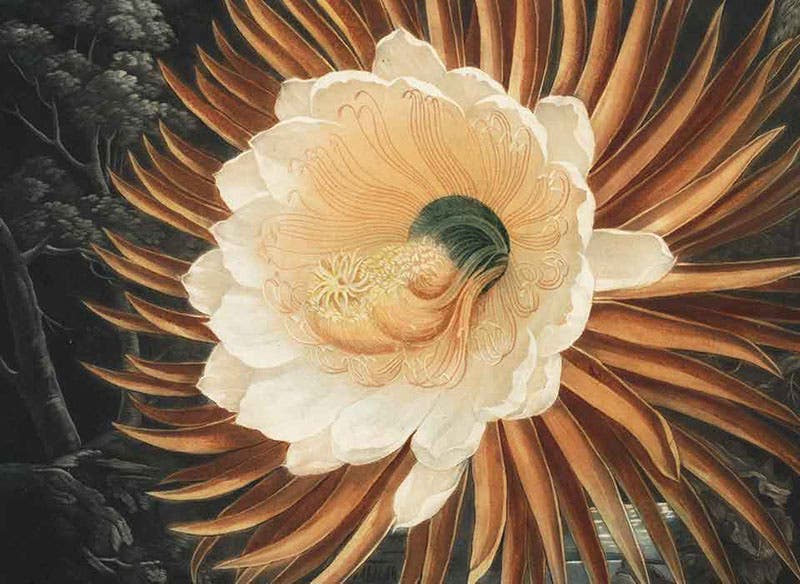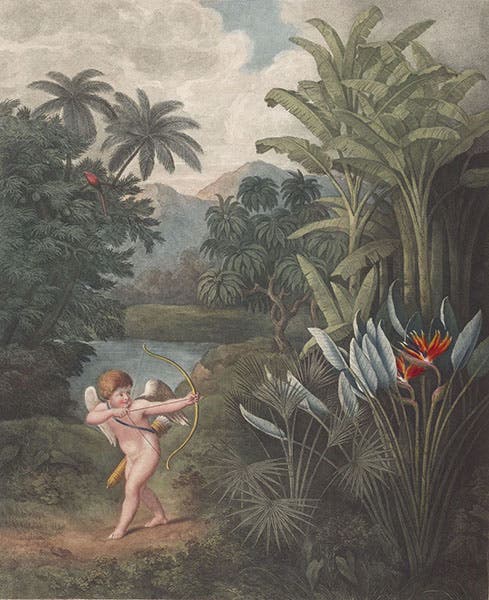Scientist of the Day - Philip Reinagle
Philip Reinagle, an English landscape painter, died Nov. 27, 1833, at age 84; his date of birth is not known. Reinagle painted hunting scenes, dogs, and occasionally birds, but he is best known for the 13 flower paintings he executed for Robert John Thornton's Temple of Flora (1807), one of the most sumptuous flower books ever published. The paintings were turned into engravings (often complex engravings that included combinations of line engraving, stipple, etching, mezzotint, and aquatint), which were hand-colored or, on several occasions, printed in color, and then issued one at a time to subscribers, beginning in 1798. In 1807, all 31 engravings published so far were given a title page and issued as a book, which we have in the Library’s History of Science Collection. The book as a whole has a different title, New Illustration of the Sexual System of Carolus von Linnaeus, but the title of the section with all the flower plates, The Temple of Flora, is commonly applied to the work as a whole.
You can see three of the plates made from Reinagle paintings in a post on Robert Thornton that we published almost 8 years ago; the plates there (second, third, and four images at the link) show the Night-Blooming Cereus, the Large Flowering Sensitive Plant, and the Oblique-Leaved Begonia. It appears that I did not mention Reinagle by name in that post, which was scholarly negligence on my part, and I apologize. For this occasion, we show you three additional Reinagle prints: The Superb Lily (first image), The Blue Passion Flower (second image), and Tulips (third image). Tulips may be the most prized of all the Thornton-commissioned plates, for whenever individual plates from the Temple of Flora are sold at auction, The Tulips usually attracts the highest bids. My personal preference is for the Blue Passion Flower. The original oil painting of the passion flower by Reinagle, the basis for the print, is in the Yale Center for British Art.
In addition to showing these three Reinagle prints, and linking to the three we showed in our Thornton post, I thought we could provide some details from several of the engravings, so you can see just how exquisite they are. A detail of the Blue Passion Flower reveals Reinagle’ skill at composition (fourth image, just below). It is also a testament to the skill of the engraver, in this case James Caldwall, but we are going to downplay the engravers’ roles in this post, otherwise it gets too complicated. We have, however, provided the engravers’ names in the captions. Perhaps one day we can feature one of the engravers (there are five different ones represented here), and provide photomicrographs with extreme blow-up views of the different engraving techniques required to make the copper plates for these prints.
A second detail shows the top of the Large Flowering Sensitive Plant [Mimosa], included in full in our earlier post. Here, you can admire not only the hummingbird, but the aquatint sky (fifth image, just above).
Our third detail shows the flower of the Night-Blooming Cereus (sixth image). You can see the entire plate at our post on Thornton. This was an unusual plate, in that Reinagle painted only the flower. The extensive background, with the clocktower, was painted by Abraham Pether, and was rendered in mezzotint for the print.
Reinagle did an additional painting for the Temple of Flora, a frontispiece that is titled Cupid Inspiring Plants with Love (seventh image, just above). It is quite a charming painting, perhaps his finest work for Thornton. The original painting is in the Fitzwilliam Museum at Cambridge University, but I can no longer find it on their website. The flower being targeted by Cupid’s arrow is the Bird of Paradise, recently described by Joseph Banks and named Strelitzia reginae, after Queen Charlotte of England. There is a plate of The Queen, as Thornton called it, in the Temple of Flora, but it was not painted by Reinagle, but by Peter Henderson, who did 15 plates for Thornton, including the two we showed when we exhibited the Temple of Flora in our Grandeur of Life exhibition in 2009. Henderson was obviously just as talented as Reinagle, and we will feature Henderson here as soon as we can find a date to which we can pin his bio.
William B. Ashworth, Jr., Consultant for the History of Science, Linda Hall Library and Associate Professor emeritus, Department of History, University of Missouri-Kansas City. Comments or corrections are welcome; please direct to ashworthw@umkc.edu.

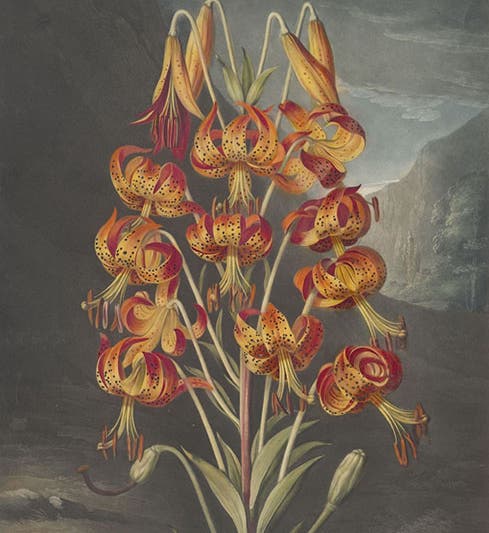
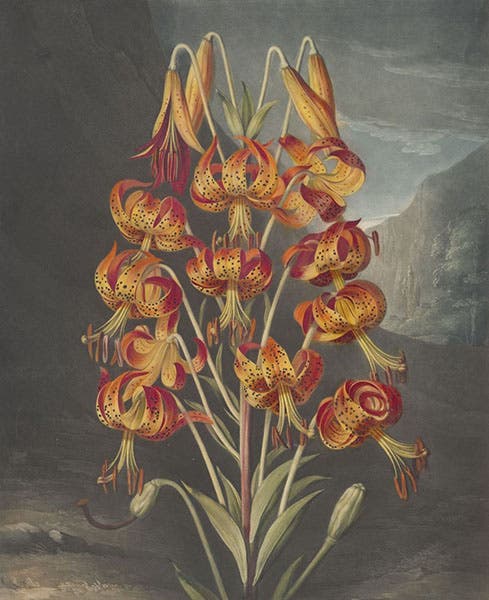
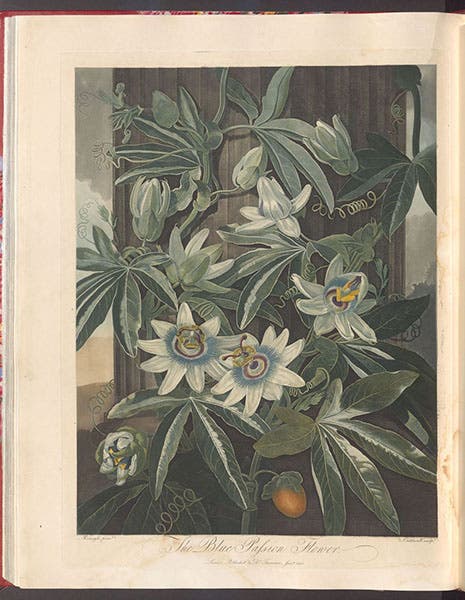
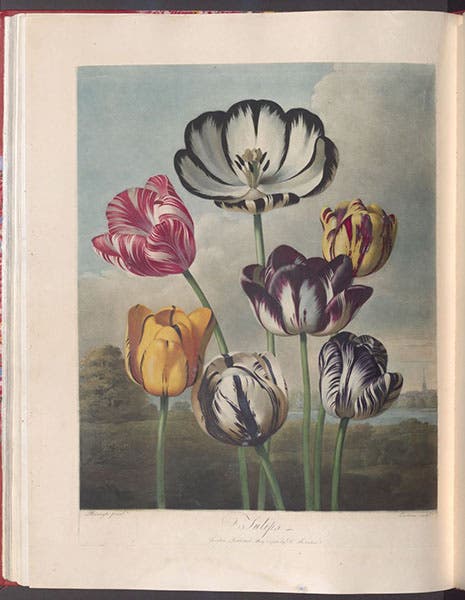

![Detail of Large Flowering Sensitive Plant [Mimosa], hand-colored and color-printed engraving by Joseph Stadler, 1799, after painting by Philip Reinagle, in The Temple of Flora, by Robert Thornton, 1807 (Linda Hall Library)](https://assets-us-01.kc-usercontent.com:443/9dd25524-761a-000d-d79f-86a5086d4774/c1cb64b0-73de-4b3b-bdb7-78a116106ad8/reinagle5.jpg?w=800&h=526&auto=format&q=75&fit=crop)
